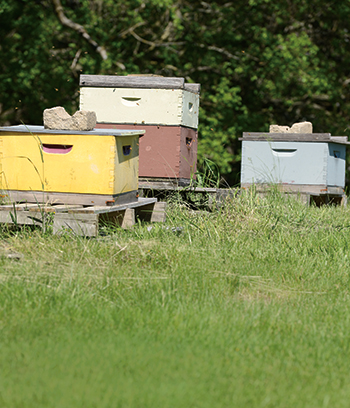
Written by Joe Gardyasz
It didn’t take long for Sharon Krause to learn how essential a smoker—a hand-held bellows with a smoldering fire used to douse bees with calming smoke—is for amateur beekeepers. “Anytime I’ve not used the smoker, I’ve gotten stung,” Krause says. And by the way, a veil and heavy long-sleeve shirt aren’t the only essentials. Make sure your jeans don’t have even the tiniest hole, she says, because “they’ll find it.”
Krause, a philanthropist who this year is serving as president of Bravo Greater Des Moines, two years ago added beekeeping to her expanding repertoire of agricultural pursuits. She’s already well-known for the lambs she raises at her Dalla Terra Ranch, Iowa’s only certified organic sheep ranch.
She decided to keep bees after doing some online research to find a solution to problems she was having with her certified organic gardens. She discovered the reason for her curling cucumbers and other plant maladies was an under-pollinated garden, despite the 22 acres of restored native prairie that lie adjacent to the Waukee home she shares with her husband, Kyle, and children. A friend of hers who keeps bees gave Krause her first hive and also introduced her to a more experienced beekeeper who has become Krause’s mentor. Now she has two hives, and tens of thousands of worker bees, busy pollinating her garden.
Like the delicious golden honey that beekeepers give to their friends, family and neighbors, beekeeping continues to be passed along from one hobbyist to another in Greater Des Moines. And once someone’s tasted pure unfiltered honey, there’s just no going back to the over-processed store-bought variety, beekeepers agree.
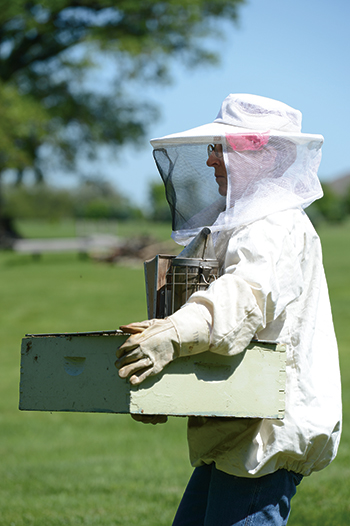
“It’s a neat hobby; it’s fulfilling, and philosophically, it’s very rewarding,” says Bob Riley, chairman of Feed Energy Co., who has played the roles of beekeeper, bee giver and bee mentor. “They take no effort, and you talk about harvesting nature—that’s really what you’re doing. It’s pretty special.”
More and more people are agreeing with that assessment. Beekeeping is exploding in popularity across the United States as well as in Iowa, says Andy Joseph, state apiarist for Iowa. In just the past three or four years, beekeeping has become much more mainstream, he says.
“We’re seeing more women and people of all ages,” Joseph says. “There’s a stereotype that’s existed for a long time that beekeepers were all older white males, rural, maybe semi-crazy, isolated. If that was ever true, it just has been completely blown apart. What we see now at our meetings is pretty close to 50-50 male/female, and a lot more youth.”
Joseph, whose job duties include inspecting hives throughout the state, estimates that roughly 3,500 Iowa beekeepers are tending approximately 40,000 colonies, which puts the state at about 17th in number of hobbyists. Prior to the 1940s, Iowa was the top state in the nation for honey production and beekeepers before large-scale agricultural practices began edging bees out.
Though it’s most common on rural acreages, beekeeping can be practiced in suburban backyards and even in urban settings, provided people use common sense and are sensitive to neighbors’ concerns, Joseph says. He kept a couple of hives in a tiny backyard behind his apartment in Louisville, Ky., while he was a college student. There are even beekeepers tending their hives from high-rise terraces and rooftops in New York City, he notes. Though he hasn’t received a call yet, he’s anticipating that one day he’ll be asked to inspect a rooftop hive in downtown Des Moines.
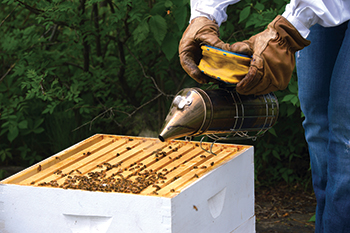
Wherever they’re located, novice beekeepers over the years have turned to Riley for guidance. Riley, who was introduced to beekeeping more than 25 years ago by the late business and community leader Bob Fleming, hasn’t tended hives of his own for a number of years, but says he may jump back into active beekeeping this year. A trustee chairman of The Nature Conservancy, the agribusiness owner has an abiding respect for the importance of bees to the environment.
“I’ve always had this thing about nature,” says Riley, who has a philosophy degree from Monmouth College in Illinois. Beekeeping “just kind of tied back into the idea of nature as an interesting and well-connected, 4 1/2 billion-year-old system that should not be taken lightly. So as I looked at bees, I saw this as one of the embodiments of a really stable design system that was really multifunctional, integral to agriculture and very rewarding to the beekeeper.”
This past spring, Riley helped his son and daughter-in-law start their first hives and, at press time, was toying with the idea of restarting his own hives as well on his farm in rural Marion County. He fondly recalls one of the first seasons he harvested honey and how sticky his young children got as they gathered around an opened hive, digging their fingers into the honeycomb to taste the honey.
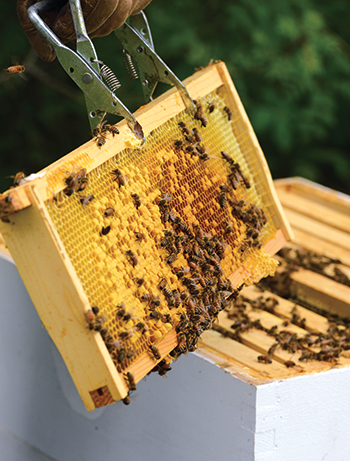
Family tradition created a soft spot for beekeeping with another well-known Greater Des Moines community leader, Loree Miles. When her elderly father was hospitalized several years ago, Miles learned he had been a beekeeper when he was a boy. While semiconscious, her father talked in his sleep about tending the bees, a story she had never heard from him earlier.
Miles, owner of a motel franchise company and chair of the Iowa Transportation Commission, began reading up on bees six years ago. She took a beekeeping class from Phil Meyer, a retired state entomologist and avid hobbyist who has mentored many beginners. Initially, she and one of her brothers kept some hives; she’s had her own hives for four years now. She now tends five hives on the acreage where she and her husband, David, live in rural Dallas Center.
For Miles, like Krause, the hobby is essentially a solo endeavor, though her family members do occasionally don a veil to see the bees. Meyers continues provide guidance, Miles says. “He is very helpful, and in fact he’s become a good friend,” she says. “He actually comes out to my place and assists me. And every spring, if I need bees, he orders them for me.”
Though queens can live for several years, Miles routinely orders new a new queen for each hive every spring to maximize honey production. Last year, her five hives produced 23 gallons—or about 275 pounds—of honey.
Miles learned a new aspect of the hobby last year, tackling the messy but rewarding job of extracting the honey from her hives, a task that she had previously let Meyers handle. Coincidentally, she borrowed an extractor from her friend and fellow bee enthusiast, Bob Riley. She also learned how to make creamed honey, a process that makes the honey smooth and spreadable.
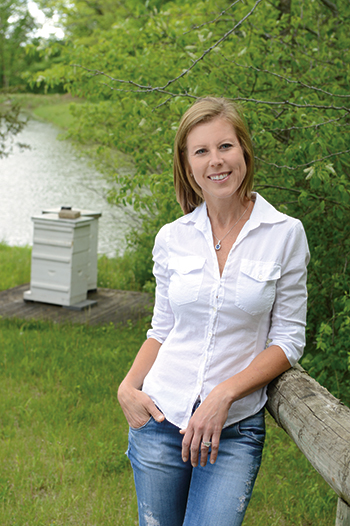
Sharon Krause pauses to enjoy the natural beauty surrounding her hives, which are set close to a pond so her busy workers can easily find essential water.
Krause likewise maintains a relationship with her mentor, Doyle Kincy. He helped Krause order and install her first two “packages” of bees into her hives. (Most bees are ordered online from national suppliers and are mailed in special three-pound packages containing about 500 bees and a mated queen that’s ready to lay eggs.)
With Kincy’s guidance, Krause produced 120 pounds of honey from two hives in her first year. In the past two years, she has sold much of that home-raised honey under her Dalla Terra brand at the Amici coffeehouses that she owns, as well as through the Iowa Food Co-op.
Krause says she’s also seen significant improvement in her gardens, now that she’s got thousands of diligent worker bees pollinating her plants.
Miles says that not only do the bees help her garden produce more, but the natural honey they produce has ended the pollen allergies that she and her daughter had suffered from for years. Simply eating a spoonful or two of the pollen-laden honey every day has provided an immunizing effect against allergies.
Regardless of how long a hobbyist has been keeping bees, the fascination only increases, says Riley, who was so intrigued when he first saw bees up close at Bob Fleming’s home near Carlisle that he accepted his friend’s invitation to take two of the hives home that same day in his Chevrolet Suburban, wrapped in a sheet.
Riley has even patterned some of his company’s manufacturing processes on the work habits of bees. Just consider, he notes, the wonder of the precise hexagonal cells built by the worker bees that maximize the use of space, to the complex dances the workers perform to tell the rest of the hive where the best pollen and nectar are located. “If you could get people to act like bees, it would be much better,” quips Riley. “When you think of a bee tribe that is protective of their hive, protective of their honey and protective of each other, it is a perfect system.”
Russian Royalty
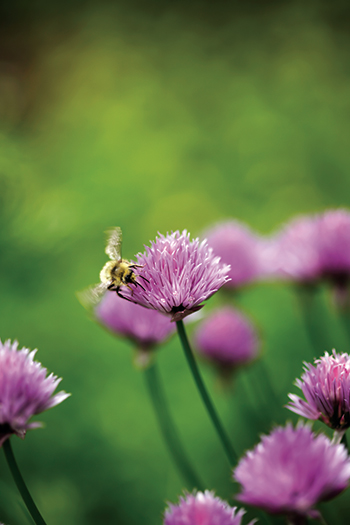 A few years ago, Jason Foley was the envy of beekeepers throughout Greater Des Moines. Though he was a relative novice to beekeeping, Foley had never lost a hive to disease and somehow kept his hives free of parasitic mites without using chemicals—two feats that often elude even the most seasoned beekeepers.
A few years ago, Jason Foley was the envy of beekeepers throughout Greater Des Moines. Though he was a relative novice to beekeeping, Foley had never lost a hive to disease and somehow kept his hives free of parasitic mites without using chemicals—two feats that often elude even the most seasoned beekeepers.
When veteran beekeepers pressed him for his secret, they found it wasn’t his methods that made the difference. It was his bees—Russian bees, to be specific.
As other beekeepers started asking to buy queens and splits from his hives, Foley’s hobby began to morph into a business, and thus hatched Foley’s Russian Bees.
After six years pursuing the hobby, Foley hasn’t lost a single hive to disease or cold weather, “and I can’t say that about anybody that I know in any of the bee clubs,” he says.
Besides raising artisan bees, Foley is a talented woodsmith, turning out handmade wooden hives made of Iowa red cedar. This year, he launched a website, foleysrussianbees.com, and has a waiting list of hobbyists from around the country who want to buy his custom-grown queens and bees as they’re produced.
His goal is to become a certified grower of Primorsky Russian bees. There are only eight certified members of the Russian Honeybee Breeders Association Inc., whose standards are monitored by the U.S. Department of Agriculture.
The hobby-turned-business started because he wanted “a trouble-free bee,” Foley says. After doing extensive research, he decided on the Russian variety, which had originally been exported from Russia’s Primorsky region in an effort by the industry to develop a more disease- and cold-weather-resistant bee.
American beekeepers tend to stick with tried-and-true varieties of bees, such as the gentle Italian and the hard-working Carniolan, says Andy Joseph, state apiarist for Iowa. Impressed with the Russian stock, Joseph says the bees are definitely an option for hobbyists to consider trying.
Foley, who tends about 30 hives at his suburban acreage near Easter Lake, plans to ratchet up his operation to some 200 hives by this fall–selling queens and “nucs,” or nucleuses that are partial hives that include a queen. “My business has been doing very, very well, and there are just that many people asking me to be a supplier,” he says. “To keep up with it, I really need to keep expanding.”
Did You Know?
A typical colony of bees within a hive will grow to a population of about 60,000 during the peak summer season.
Nearly all of the tens of thousands of bees in a hive are workers, and all of the workers are females. Each hive has just a few hundred male drones, whose only role is to mate with the queen while in flight.
Each hive has just one queen, which can lay up to 1,500 eggs per day. Worker bees have a lifespan of about 35 days; queens can live several years. Still, some worker bees can last through the winter because they aren’t engaging in any activities, such as gathering pollen. The hive’s occupants will mass into a tight, rotating ball and vibrate their wings as they constantly move from the outside to the inside of the ball to share the collective heat, which keeps the hive’s interior at a toasty 91 degrees.
If a hive becomes too large, the workers will prepare queen cells for a new queen; meanwhile, the existing queen leaves the colony in a swarm with about half the workers, which find and establish a new hive site.
The standard hive design most popular with beekeepers, the Langstroth hive, predates the Civil War. This precise design of stackable boxes, which allows easy removal of frames for inspecting the bees and removing honey-filled-frames, was patented in October 1852.









